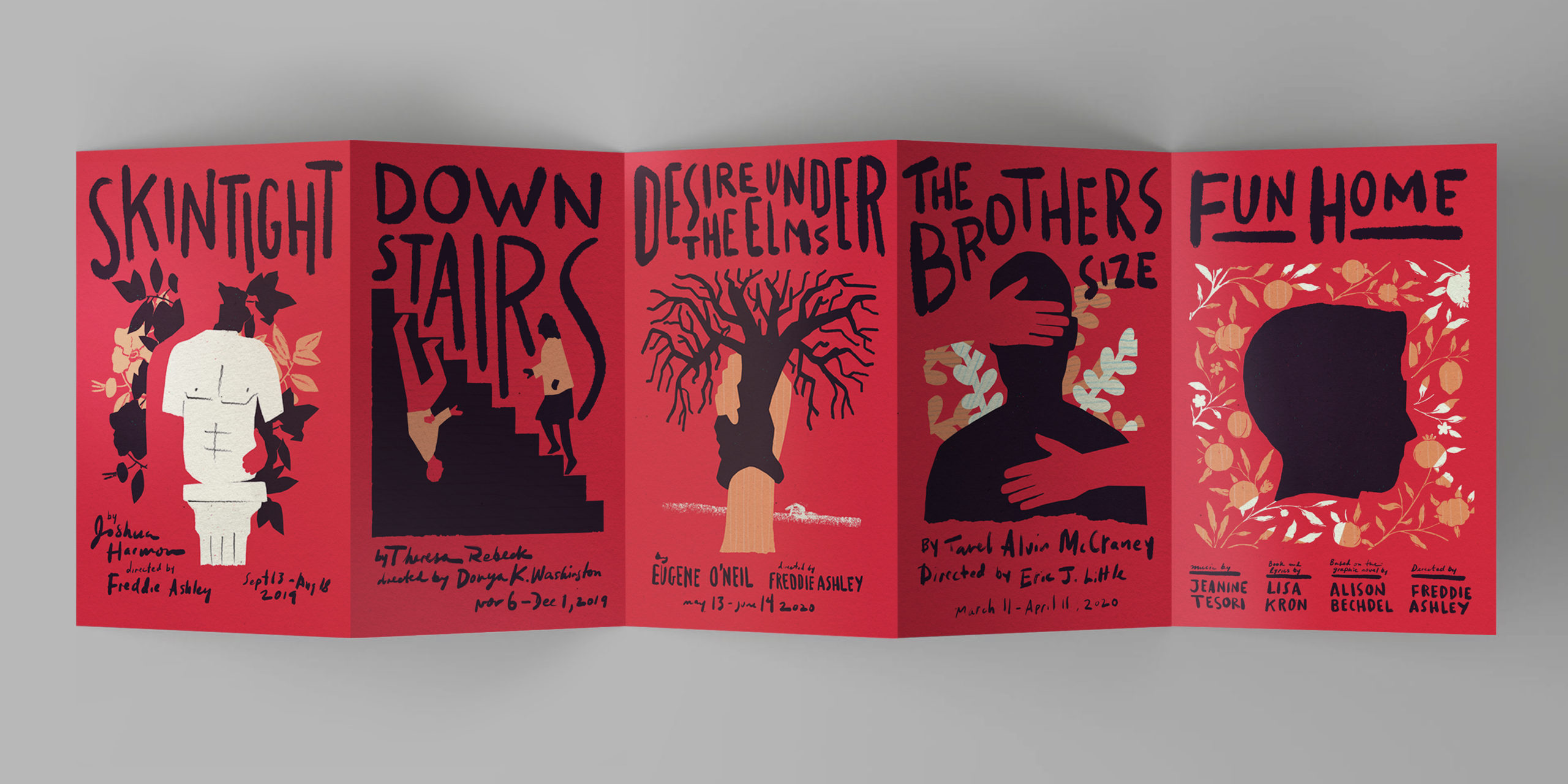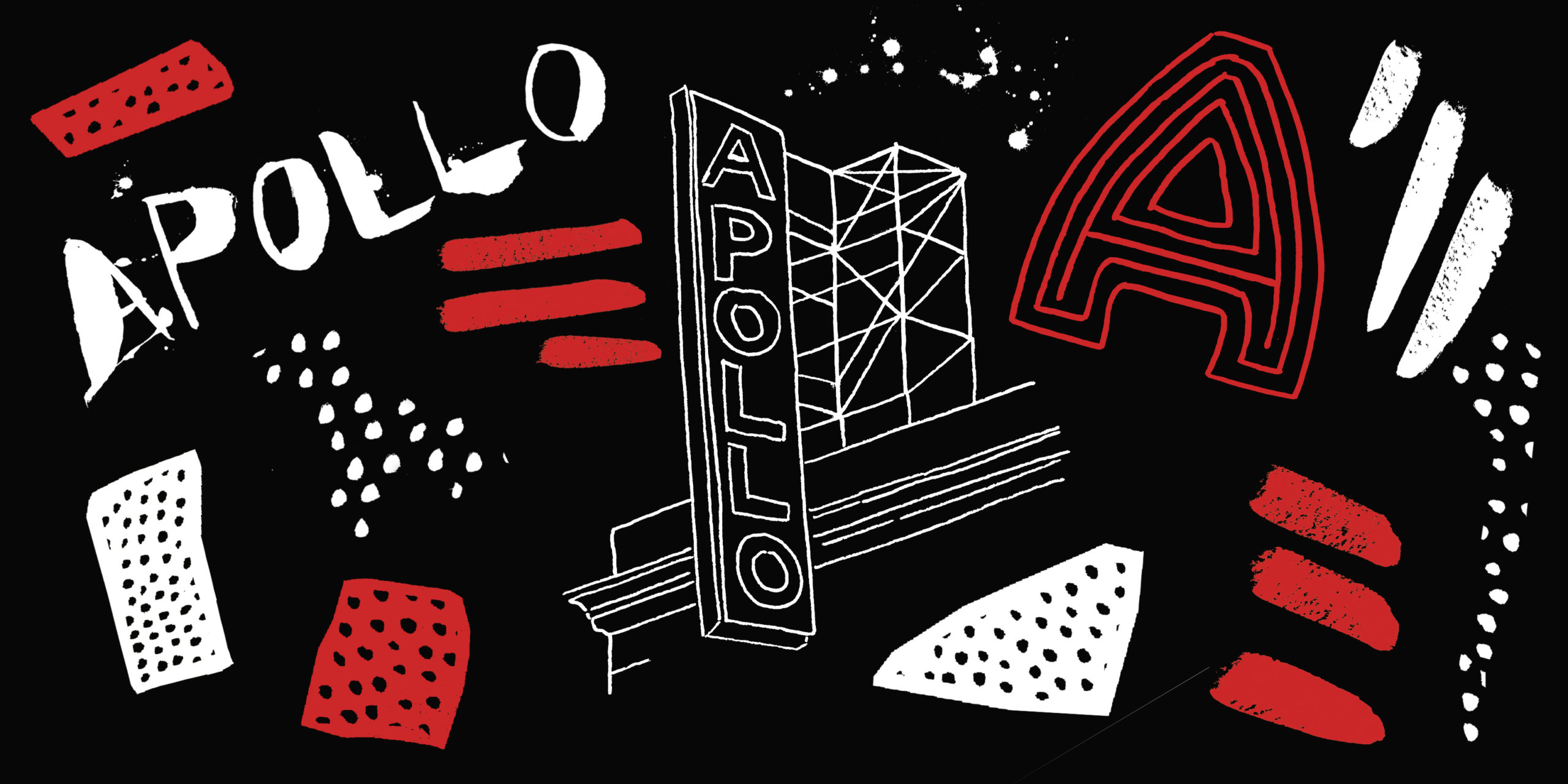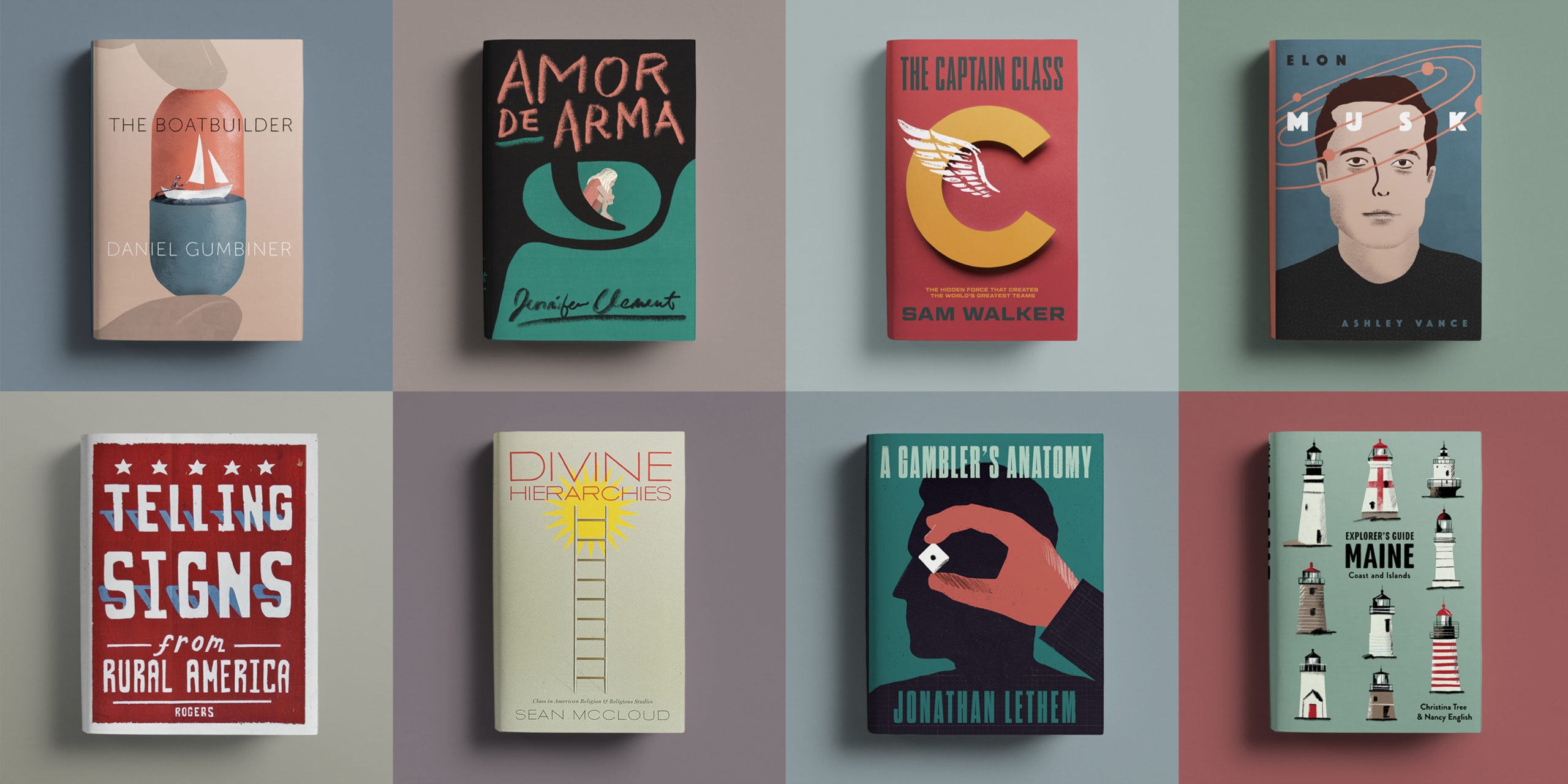Alumni Spotlight: Stuart Rogers
Stuart Rogers (MFAD ’04) is a graphic designer and illustrator focused on projects for editorial, cultural, and publishing clients. He is also the co-founder of Rogers Eckersley Design, a studio specializing in branding and campaigns for clients like CNN, the National Football League, and the AIGA.
Can you tell is a little about what informs your work?
I’ve always been interested in the intersection between illustration and design. At Rogers Ecksersley, the projects that I have enjoyed most are things like book covers, theater campaigns, and type-based editorial illustration. Lately, I’ve been developing a more consistent approach to illustration because I want to work on projects like this more frequently. I’m focusing more purposefully on the editorial and publishing markets.
What are some of
There are so many projects from Rogers Eckersley that I love. One of my all-time favorites is stat bats, a project where we laser engraved baseball bats with hitting statistics. The process was so complicated but the payoff was great. I also like our work for performing arts groups, like The New Group and the Apollo Theater. I just completed the 2019-2020 key art for Actors Express in Atlanta and am really happy with it because it brought together illustration and design.
What keeps you inspired?
I’ve been living abroad with my family recently. We’ve spent time in Switzerland, Malaysia, and now Brazil, and in all of these places I’ve connected with local designers. I was inspired by the experimental typography in Switzerland. Culturally, they place a high value on design and treat it as an art form. For me the most exciting design firm there was Claudiabasel but there were so many. In Malaysia, I was inspired by a graphic designer named Lisette Sheers who started a textile product company called Nala based her illustrated patterns. Brazil is equally as exciting. You see the value of art and design in São Paulo in the form of large scale murals everywhere. There so much happening around the world and it’s exciting to catch a glimpse of it.
What do you do for your personal creativity?
My environment is my first source of inspiration. I’ve lived in these very different places overseas, each with its own specific culture and visual language. I try to take a sketchbook with me as often as possible to capture some of the things that make an impression. I’m constantly comparing to New York, which is like the control in my ongoing experiment.
What interesting trends do you see happening in the design world?
I like the trend of designers making and selling products, and the fluidity between art, illustration, and design. Working this way isn’t for everyone, but I think it’s a good option for some designers to create other sources of income and retain ownership of their work.
What advice would you give incoming students?
It’s incredible to be part of MFA Design so make the most of your time while you’re there. I remember the struggle of choosing my thesis project. I went through so many ideas! In the end, I chose something that was close to my heart and I think that was a good decision because it made the experience so enjoyable.
What is your favorite part of the MFA Design program?
The people—my classmates, the faculty, and leadership are all great. I’m also a big fan of the way the program balances high-level design and practicality. It’s a great place to be if you are interested in making accessible design.
How has the program changed since you’ve attended?
When I was there, the thesis didn’t begin until year two and we didn’t have the platform (literally) of the SVA theater for our presentations. I feel like that’s such great evolution in the program to be able to put all of the hard work on display and create interest around the projects.
What impact has SVA MFA Design had on your career?
SVA MFA Design led to my first jobs in New York, the founding of my design studio with fellow graduate Sam Eckersley, and many friendships that I cherish to this day. It was a totally positive and productive experience.
How has the program’s multidisciplinary approach helped you?
I think the program draws people who are naturally inclined to work in different disciplines. For me, it verified that not only is it okay to work across disciplines, but actually it can be a big advantage in terms of agility. There was a direct correlation between that experience and having the confidence to start a design studio.
If you could choose a thesis topic today, what would you pick?
Something having to do with engaging people around politics and voting.
You can see Stuart’s projects, past and present at stuartrogers.com and red-partners.com.





